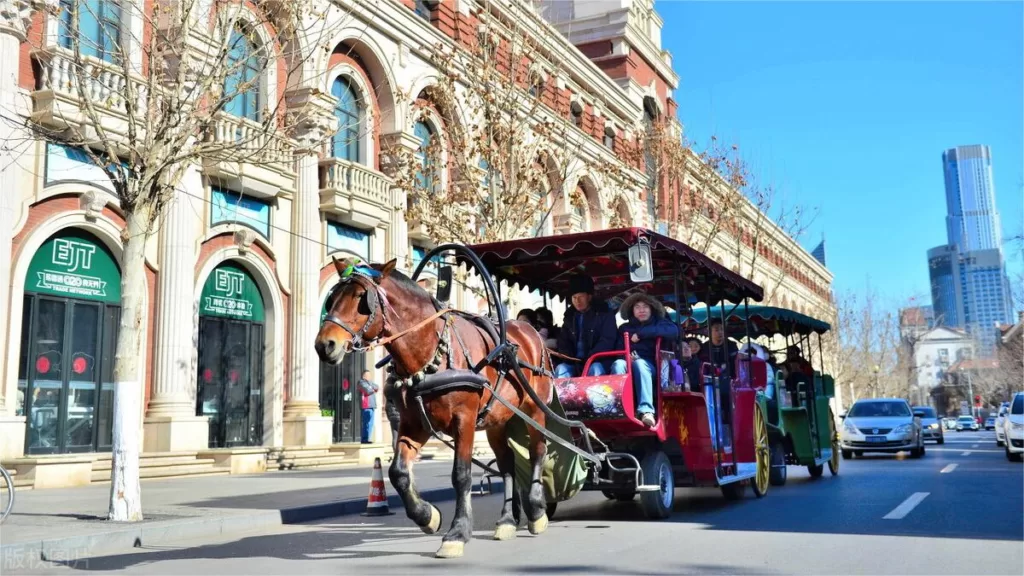Qu'est-ce qui rend Tianjin si intéressant ?


Tianjin, one of China’s major cities, is a captivating blend of history, modernity, and cultural richness. Nestled along the Bohai Bay in northeastern China, Tianjin has evolved into a vibrant metropolis with a unique character that sets it apart. What makes Tianjin so interesting is a combination of its historical heritage, architectural wonders, diverse culinary scene, economic significance, and its role as a cultural hub.
Historical Tapestry
Tianjin’s history is a rich tapestry that dates back to ancient times. The city has played a crucial role in Chinese trade, serving as a gateway to the sea. It gained prominence during the Qing Dynasty when it became a vital trade center, connecting northern China to the rest of the world. Walking through Tianjin’s historic districts, such as the Italian Concession and the Ancient Culture Street, is like stepping back in time. The architecture, ranging from classical Chinese structures to European-style buildings, reflects the city’s diverse influences over the centuries.
The Ancient Culture Street, in particular, is a fascinating area where traditional Chinese architecture, artisan workshops, and street performances come together to create an immersive experience. Strolling through this area, visitors can witness calligraphy demonstrations, purchase handcrafted souvenirs, and sample local snacks, all while surrounded by the charm of ancient China.
Merveilles architecturales
Tianjin is renowned for its eclectic mix of architectural styles, showcasing a harmonious coexistence of the old and the new. The city boasts a skyline adorned with towering skyscrapers, including the iconic Tianjin Radio and Television Tower and the Tianjin Eye, a gigantic Ferris wheel that provides breathtaking views of the city.
The Five Great Avenues, reminiscent of colonial-era streets, offer a glimpse into Tianjin’s historical European influence. Strolling along these avenues, visitors encounter grand mansions and villas that once belonged to foreign diplomats and dignitaries. The mix of architectural styles, including Renaissance, Gothic, and Baroque, creates a captivating streetscape.
In contrast, the Porcelain House, a unique structure adorned with intricate porcelain tiles, represents modern artistic expression within the city. Created by Chinese artist Zhang Lianzhi, this building is a testament to Tianjin’s ability to blend tradition with contemporary creativity.
Délices culinaires
Tianjin’s culinary scene is a treasure trove for food enthusiasts. Renowned for its local specialties and diverse international offerings, the city is a haven for gastronomic exploration. Guifaxiang, a time-honored brand famous for its traditional Chinese pastries known as “Goubuli Baozi,” has been delighting locals and visitors alike for over a century. These steamed buns, filled with succulent meat and flavorful broth, are a must-try delicacy.
The city’s food streets, such as Nanshi Food Street, come alive in the evenings with the aroma of sizzling delicacies wafting through the air. From savory snacks like Jianbing (Chinese crepes) to classic Peking duck, Tianjin’s street food offerings cater to a variety of tastes.
Economic Powerhouse
Tianjin’s significance extends beyond its cultural and historical appeal; it is a vital economic hub with a strategic location that has fueled its rapid development. The Tianjin Economic-Technological Development Area (TEDA) stands as a testament to the city’s economic prowess. This area, often referred to as China’s “Mini Silicon Valley,” is home to numerous multinational corporations, research institutions, and cutting-edge technology companies.
The Binhai New Area, a sprawling coastal district, has undergone extensive development and is characterized by modern architecture, upscale residential areas, and a thriving business environment. Tianjin’s role as a key player in China’s economic landscape is further underscored by its status as a major port, facilitating international trade and contributing to the city’s cosmopolitan atmosphere.
Pôle culturel
Tianjin is a cultural melting pot, offering a diverse range of artistic and entertainment experiences. The city hosts numerous theaters, museums, and galleries that celebrate both traditional Chinese culture and contemporary art. The Tianjin Grand Theatre, an architectural marvel itself, is a cultural hub that hosts opera, ballet, and classical music performances, attracting art enthusiasts from around the world.
The Tianjin Museum, with its striking architectural design inspired by traditional Chinese culture, showcases artifacts that span the city’s history. From ancient relics to modern art installations, the museum provides a comprehensive look at Tianjin’s cultural evolution.
The city’s commitment to cultural exchange is evident in events like the Tianjin International Comedy Festival and the Tianjin International Jazz Festival, which draw performers and audiences from diverse backgrounds. These events contribute to Tianjin’s reputation as a city that embraces and celebrates global cultural influences.
In conclusion, Tianjin’s allure lies in its ability to seamlessly weave together a rich historical heritage, architectural wonders, a diverse culinary landscape, economic significance, and a vibrant cultural scene. Whether exploring its ancient streets, marveling at its skyline, savoring local delicacies, witnessing economic dynamism, or immersing oneself in artistic expression, Tianjin beckons visitors with a multifaceted charm that makes it a truly fascinating destination.
Connaissances générales sur Tianjin